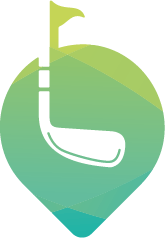When the PGA of America announced on Tuesday that it would allow distance-measuring devices in its major championships, including at this year’s PGA Championship at Kiawah Island, one of the main tenets of the decision was that it would help speed up play.
“We’re always interested in methods that may help improve the flow of play during our championships,” PGA of America President Jim Richerson said.
Rounds on the PGA Tour—DMDs still aren’t permitted on tour outside of practice rounds—routinely stretch north of five hours and in majors can be closer to six. Pace of play has also been a topic on tour for decades. Whether the use of rangefinders actually results in faster play, however, remains to be seen.
This much is evident: If you gather a dozen caddies in a room, you’re likely to get a dozen different opinions. When it comes to the impact the devices will have on speeding up play, however, almost all told Golf Digest that they will have little to no impact on moving things along any faster.
“Each year there’s maybe once or twice where I wish I had one, and that’s only when [my player] is so far offline,” said Webb Simpson’s caddie Paul Tesori. “Otherwise, I’ll still have to have the front number, carry number, how many [yards] left or right and yards behind the pin. The last number we get is the pin, and what happens if the rangefinder is more than a yard off? Then we have to re-do all the other numbers to fit what we’re trying to do with the shot.
“I’d say that we are trying to aim at a pin less than 5 percent of the time. And off the tee, I still need runouts, carry numbers and lines over trees.”
Added Rickie Fowler’s caddie Joe Skovron: “If I shot a number, I would check it three times and still have to go to my yardage book and get a front or cover number.”
Looper-turned-on-course-reporter for Golf Channel/NBC John Wood agreed, opining on Twitter that play would come to a “screeching halt” as a player and his caddie try to figure out why there’s a discrepancy between their numbers and that of the rangefinder. He also noted that a player wants the yardage his ball has to land at, not necessarily the number to the hole.
There are other factors as well when it comes to pace of play, such as field size, course conditions and a player’s routine.
“I think it will make a marginal difference,” said Brennan Little, caddie for 2019 U.S. Open champion Gary Woodland. “At the PGA Championship, pace of play is still going to be slow. Anytime you have 156 players in [major championship] conditions, they’re not going to get around quickly. When you have twosomes [on the weekend] would be a different story.”
To the point, Francesco’s Molinari’s caddie, veteran Mark Fulcher, said that while the use of rangefinders is probably logical, they will only add to the time it takes to make a decision and that he just found the whole thing “a little pointless.”
There are other points to consider as well.
Though the caddies surveyed almost all agreed the use of lasers would do little for improving pace of play, they are more split in thinking that the devices take some of the skill out of caddying.
“Anyone can shoot a flag and know without any doubt what the number is,” longtime caddie Kip Henley said. “Caddies and players [screw up] numbers all the time and especially coming down the stretch trying to win. The caddies that handle the pressure and the players that can quiet their brains have a small advantage in the course of a year in not missing numbers or gauging them from way off [the fairway] where they can’t get accurate yardages and guessing comes into play.”
Perhaps the most glaring example in recent years came in the final round of the 2017 Open Championship at Royal Birkdale, where Jordan Spieth hit his tee shot about 100 yards right of the fairway on the 13th hole, memorably took a drop on the driving range, made only a bogey and went on to win the claret jug.
“Thirty caddies would have had 30 different numbers on that shot,” Henley said.
Tesori took it a step further: “I think it rewards caddies who haven’t done their homework.”
While the use of rangefinders will be limited to the PGA Championship, Women’s PGA and Senior PGA, it’s also fair to wonder whether they will one day be permitted in all events on the various tours. Currently, they’re permitted at the NCAA level and in USGA amateur championships as well as Monday qualifying and during practice rounds on tour.
More than a few caddies oppose using DMDs beyond that.
“There have been rumors for years rangefinders would become legal on tour,” Tesori said. “I’m for them in events where having a caddie isn’t a requirement—the U.S. Amateur, NCAAs, Monday qualifying—but for a professional event I’m very against it.”
Matt Kelly, caddie for Marc Leishman, feels similarly and said he likely won’t use a rangefinder often and would likely only do so if his player is well off the fairway.
“I’m not a big fan of the decision,” he said. “It slows things down, if anything. I also don’t see the tour adopting them because it looks unprofessional on television and I don’t think the tour wants that.”

